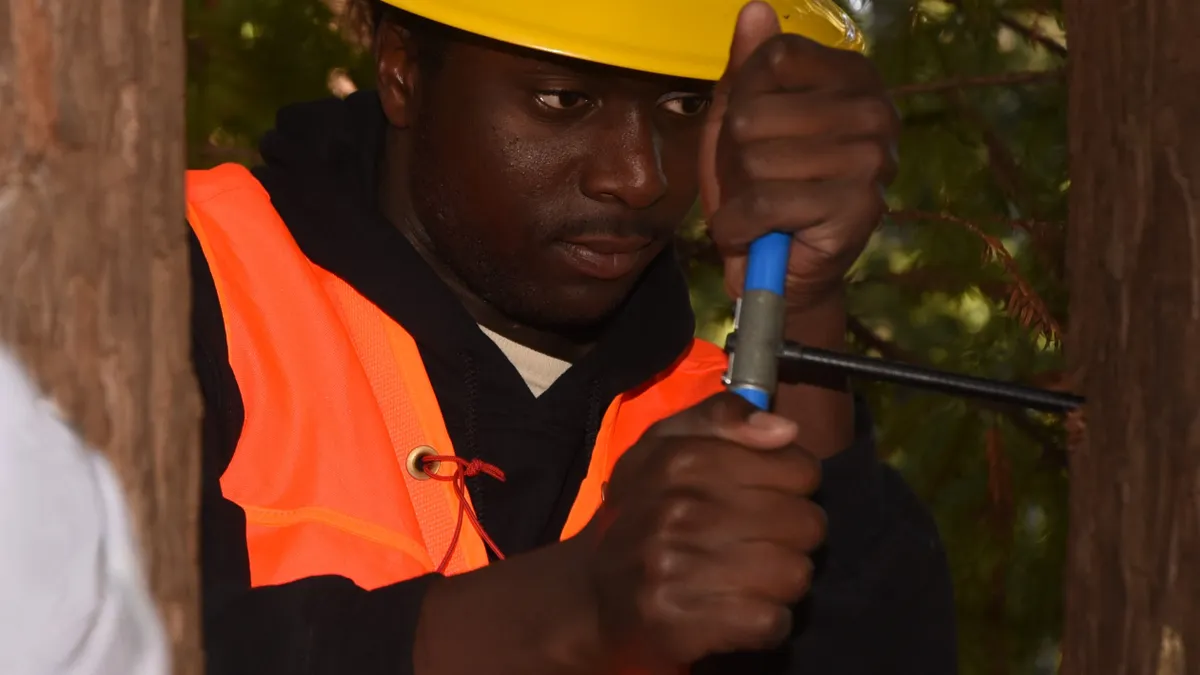Many high school students know their passions and strengths, along with what path they would like to pursue upon graduation—whether it be math, science, coding, hiking or auto mechanics. But many students don't know all the options available to them.
Meanwhile, thanks to low unemployment and an aging workforce, leaders in labor-short industries struggle to fill vacant positions. To help fill the gaps, groups are wooing future employees into their fields with internships, apprenticeships and even learning competitions.
And states, consortiums and private non-profits are reaching out to schools to connect students with career experience opportunities in the hope that — one day — these students will return for a job.
Students get on board with transportation
The Minnesota Department of Transportation realized 15 years ago that more workers were retiring than applying for new jobs. To stem the loss of labor, it launched the Phoenix Internship Program, giving high school students across the state paid internships in the department's offices. The program has internships in civil engineering, architecture, accounting and environmental planning, among other areas.
The students learn how their field's office works and take over simple tasks, supporting the staff while gaining valuable experience.
“If they have a surveying internship, they could learn how to set up a tripod, look for markers, find landmarks,” said Beth Friberg, Minnesota DOT Seeds/Phoenix & Retaining Our Workforce Programs Coordinator.
Friberg also cited an example of a student who used the Python programming language to cut a program's processing time by hours. “The student just blew us away,” she said.
“I have four kids of my own, and I wish this would have been around when they were young,” Friberg said. “It’s so important for young people to be in professional work environments rather than just working in fast food or at a gas station.”
Apprenticeships entice students into worker-short industries
In Wisconsin, the Dane County School Consortium's apprenticeship program matches students with employers facing potential worker shortages.
Not only does the program show students what options are available, but it also helps worker-strapped industries attract new employees, said Josh Fassl, director of the Dane County School Consortium.
The program jump-starts students’ career preparation, Fassl said, adding that they often haven't really decided what they want to be before they go off to a four-year college, which is an expensive place to figure out a plan. It's best to have an idea of what direction you want to go before starting, he said, because sometimes a four-year degree isn't even necessary.
“Over 90% of the students who go through the program are later offered positions in the field,” Fassl said. “The program helps connect college aspirations with real-world employment and worksite skills. We get students onto the ladder of success while they are still in high school, which helps them solidify their future career pathway while building work ethic.”
Fassl shared a comment from former apprentice Sarah Matejka, who completed the program in 2017.
“I knew I loved science, but did not really know what that exactly meant regarding a career and how to get there through college," Matejka said in statement. "The YA program helped me solidify my love for scientific research and the topics I want to pursue the most, which right now is molecular biology/genetics."
Emma Fischer, another former apprentice who went through the program in 2018, added: "This program helped me to reinforce my interest for the sciences before pursuing a major I could potentially dislike."
Heading to the woods
In California, a statewide program and competition called Forestry Challenge trains students in forest management skills aligned with state math and science standards. Not only does the program tie in with California’s curriculum, it also introduces students to the forestry and natural resource fields — an industry also feeling the labor crunch.
The challenge exposes students to career opportunities in the natural resources field, said Diane Dealey Neill, executive director of Forestry Educators Incorporated, which runs the program.
The Forestry Challenge is a competition for high school teams of about five students from environmental science or biology classes who focus on solving forestry problems. The challenge includes a field test with tasks like measuring trees and gathering metrics on the forest, interpreting graphs and understanding basic ecology.
“We take a real-life situation that is actually happening and teach students how to make a decision and take action,” she said.
Students immerse themselves in the forestry field and learn the importance of managing the forest through science and preventative measures. She hopes the competition triggers interest in the industry and brings students back for jobs.
“Right now, there is a need for foresters, loggers, [and] fish and wildlife biologists,” she said. “This program reaches students at a critical age in their lives where they are making important decisions that will lead them to a happy and productive life. Even if they don’t pursue a career in forestry, they will be better-informed citizens and understand the complexity and science needed to manage the forest.




















